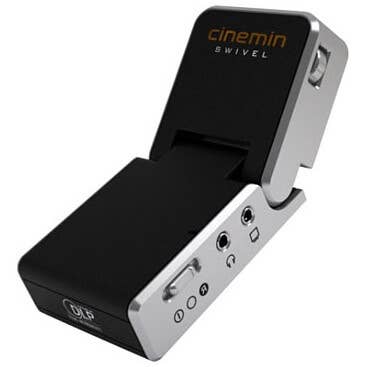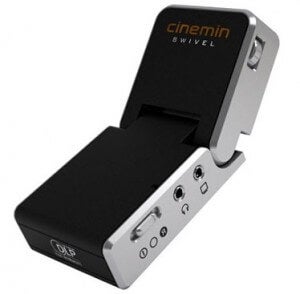Hand Held Projectors: Is Texas Instruments Too Widespread to Defeat?

Share

Wowwee's Cinemin Swivel projector is just one of many hand helds using the DLP chip.
When it comes to selling cool gadgets, the best technology doesn't always win. Sometimes being popular is more important than having the best specifications. That may be true for the upcoming competition in handheld projectors. Singularity Hub recently discussed projectors in mobile phones, and there's also a growing trend of independent plug and play versions of these devices. Texas Instruments (stock: TXN), Microvision (stock: MVIS), and 3M (stock: MMM) are all competing fiercely to dominate that trend. What strikes me, though, is the sheer number of third party companies that are adopting TI's DLP™ technology. That chip may have already secured its spot at number one. Check out some product videos after the break.
Just the concept of a hand held projector is cool enough to give a geek the bends, the fact that we could see them in a phone is added awesomeness. As we said before, TI collaborated with Samsung to create both a mobile phone and an independent hand held device (the MBP-200) that use their pico projector. Add to that list Wowwee's Cinemin™ Swivel, the Optoma Pico PK-101, and a projector from Bug Labs. All have specs that are in the same ballpark as the Samsung MBP-200. Take a small step up in size and you have Acer's K10 Pico Projector, Toshiba's TDP-F10U, Dell's M109S, and the BenQ Joybee GPI. With this many companies using the DLP™ chip, you can bet that someone is going to find the optimized sweet spot of pricing, power, accessories, and advertising. It's just a matter of time.
While I'll leave the debate as to which of the DLP™ using projectors is best to the gadget gurus, I do want to point out two unique things. One, the Cinemin™ Swivel has a built-in hinge in its design that allows it to operate without a stand or prop. Cool. If that doesn't do it for you, they also have a static version (Cinemin™ Stick) and a larger Cinemin™ Station. Second, while most of these projectors are going to cost you above $400, Dell is running a weird promotion to get their projector for $299. Very cool.
Cinemin Swivel Video [please excuse the creepy ambience]
Why should a Singularity Hub reader care about all of this? Well, as I said last time, competition is every tech-geek's dream come true. It leads to great innovations, cheaper gadgets, and sometimes unexpected break-throughs. The big three companies are going to fight over projector phones (Microvision has a deal with Motorola for a protoype), and if the competition wasn't enough, now we have all these companies working on the TI DLP technology just on its own.
Be Part of the Future
Sign up to receive top stories about groundbreaking technologies and visionary thinkers from SingularityHub.


And the plethora of pico projectors also indicates that the hand held projector trend is a secure one. We're approaching a day when everyone's media will not only be personalized but also carried on their person. Smart phones already combine web access, music, and communications. Add in shared video experiences and you'll turn into a walking media exchange center. Such devices would be about as futuristic as the proverbial jetpack. And they're just around the corner.
Now, it's possible that just as a multitude of MP3 players evolved into iPod mania, projectors will find one brand that becomes synonymous with the concept. But in the meantime competition is key. With so many companies supporting DLP™, it may have become a pico-projecting Hydra. Come on Microvision and 3M, there's room for more than one monster in the game.
Don't know whether or not a hand held projector is a good buy for you? Maybe this humorous ad for the BenQ Joybee GPI will help:
Related Articles

How Scientists Are Growing Computers From Human Brain Cells—and Why They Want to Keep Doing It

These Brain Implants Are Smaller Than Cells and Can Be Injected Into Veins

This Wireless Brain Implant Is Smaller Than a Grain of Salt
What we’re reading